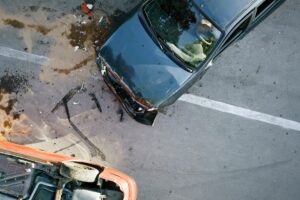Who’s at Fault in a Rear-End Collision in Washington?


Rear-end car collisions are common. With 120 years combined experience, our attorneys can help.
Rear-end collisions are among the most common type of car accidents in Washington state, and they account for nearly 29% of all reported crashes, according to the National Highway Traffic Safety Administration (NHTSA). While it’s often assumed that the driver who rear-ends another vehicle is automatically at fault, the reality is more nuanced. Determining liability in such accidents involves understanding state laws, examining the circumstances of the collision, and considering the actions of all parties involved.
Understanding Rear-End Collisions in Washington State
In Washington, the general presumption is that the rear driver is at fault in a rear-end collision. This is based on the expectation that drivers maintain a safe following distance and remain attentive to traffic conditions. According to RCW 46.61.145, drivers must not follow another vehicle more closely than is «reasonable and prudent,» considering the speed of vehicles and traffic conditions. This statute places the primary duty of avoiding a collision on the following driver.
However, this presumption is not absolute. There are scenarios where the lead driver may share or bear full responsibility for a rear-end collision. For instance, if the lead driver suddenly stops without a valid reason, reverses unexpectedly, or has non-functioning brake lights, they may be found at fault. In such cases, the rear driver must provide evidence to rebut the presumption of fault.
Factors Influencing Fault Determination
Determining fault in a rear-end collision involves analyzing various factors:
- Sudden Stops: If the lead driver makes an abrupt stop without a legitimate reason, it may contribute to the collision.
- Vehicle Malfunctions: Non-functioning brake lights or turn signals on the lead vehicle can impede the rear driver’s ability to react appropriately.
- Unsafe Lane Changes: If the lead driver changes lanes without signaling or cuts off another vehicle, leading to a collision, they may be held liable.
- Distracted Driving: If either driver was distracted—such as using a mobile phone or adjusting the radio—it could influence fault determination.
- Weather and Road Conditions: Adverse weather or poor road conditions can affect stopping distances and visibility, impacting the assessment of fault.
Comparative Negligence in Washington
Washington follows a «pure comparative negligence» system. This means that if both parties share fault in an accident, each party’s compensation is reduced by their percentage of fault. For example, if you’re found to be 30% at fault in a rear-end collision, you can still recover 70% of your damages from the other party.
This system underscores the importance of accurately determining each party’s degree of fault, as it directly affects the compensation one may receive.
Steps to Take After a Rear-End Collision
If you’re involved in a rear-end collision in Washington, consider the following steps:
- Ensure Safety: Move to a safe location if possible and check for injuries.
- Call Emergency Services: Report the accident to the police and request medical assistance if needed.
- Exchange Information: Collect contact and insurance details from all parties involved.
- Document the Scene: Take photographs of the vehicles, road conditions, and any visible injuries.
- Gather Witness Statements: If there are witnesses, obtain their contact information and statements.
- Seek Medical Attention: Even if injuries seem minor, it’s essential to get a medical evaluation.
- Consult an Attorney: Engage a personal injury attorney to understand your rights and navigate the claims process.
Importance of Legal Representation
Navigating the aftermath of a rear-end collision can be complex, especially when determining fault and negotiating with insurance companies. An experienced personal injury attorney can:
- Investigate the Accident: Collect and analyze evidence to establish fault.
- Handle Communications: Manage interactions with insurance companies to protect your interests.
- Negotiate Settlements: Aim for fair compensation covering medical expenses, property damage, lost wages, and pain and suffering.
- Litigate if Necessary: Represent you in court if a satisfactory settlement cannot be reached.
Get Car Accident Legal Advice in Yakima
While the rear driver is often presumed at fault in rear-end collisions in Washington, various factors can influence this determination. Understanding state laws, gathering comprehensive evidence, and seeking legal counsel are crucial steps in protecting your rights and securing appropriate compensation.
Contact us at Abeyta Nelson Personal Injury Law today.